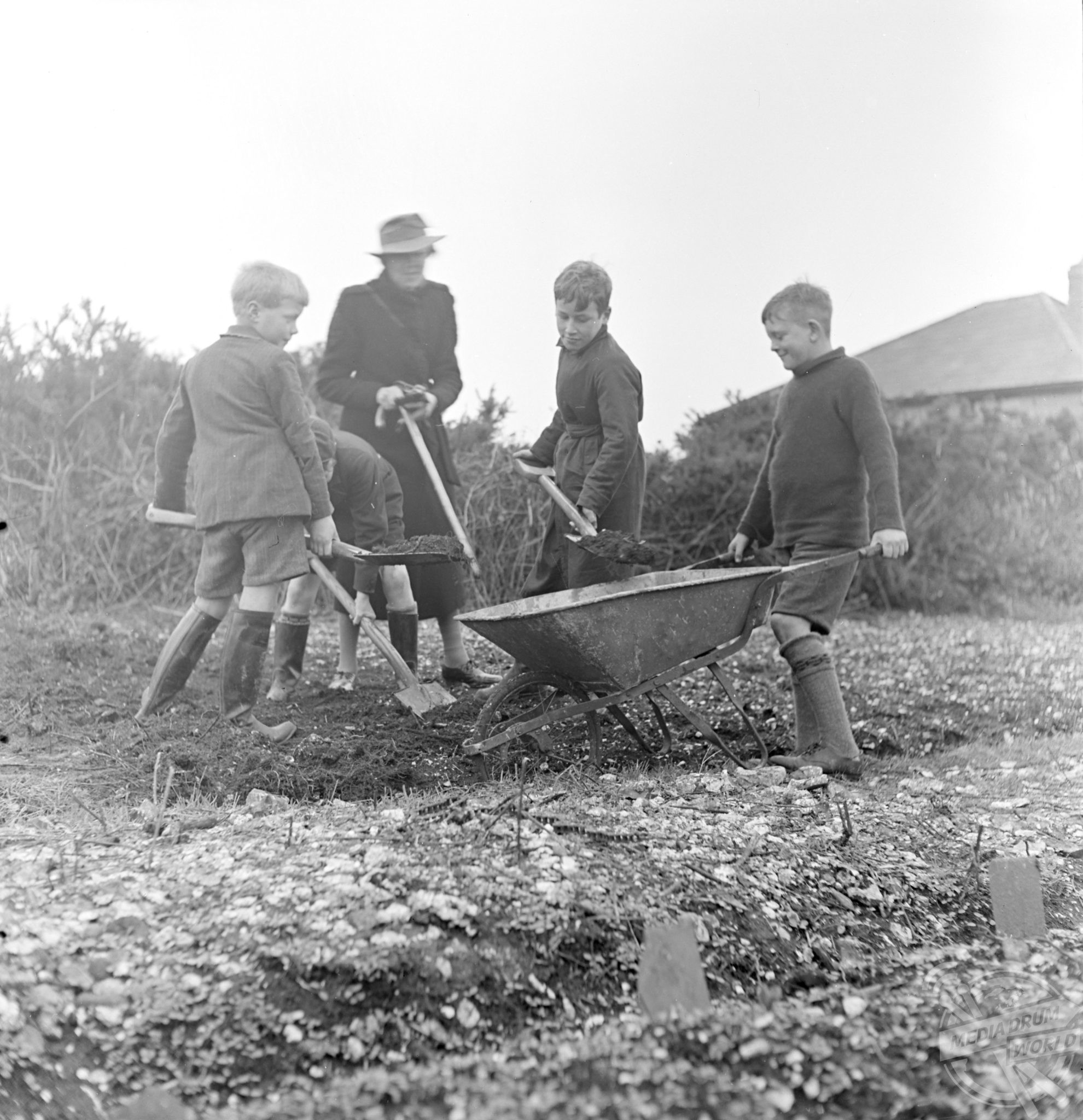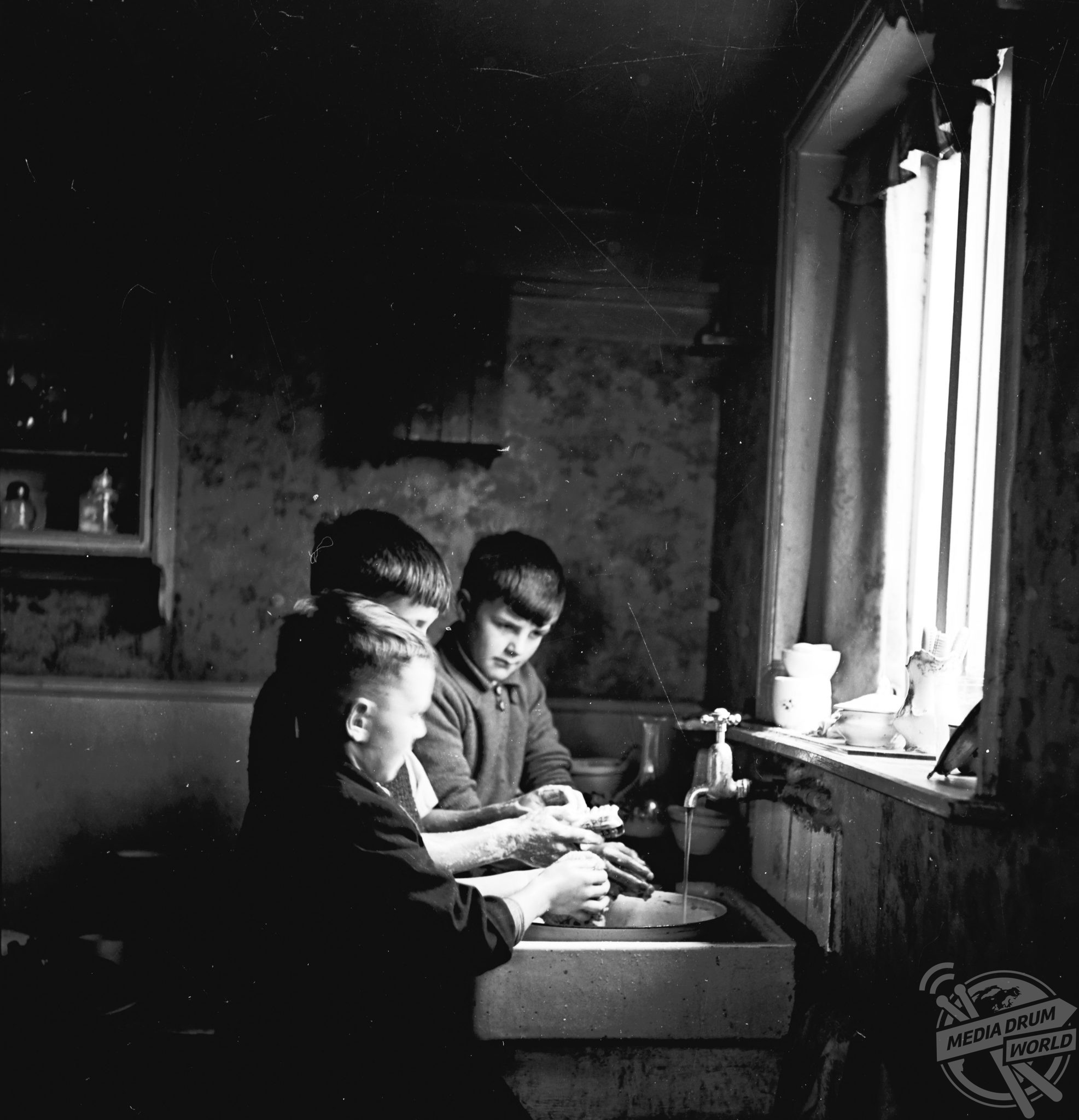
By Rebecca Drew
MONOCHROME images show how the first wave of London evacuees adjusted to life in the safety of the countryside after escaping the perils of the city during the Second World War.
Incredible photos show how groups of young cockney children from the Sydenham Road area of Croydon, London, transitioned to getting stuck into life on the farm after being evacuated to Woodingdean, Brighton, in 1939 to avoid Nazi bombings.
The black and white pictures show the bewildered city children seeing a pig and her baby piglets and a cow being milked by hand for the first time. Other shots show a group of boys writing their letters home, shovelling earth into a wheelbarrow and inspecting a freshly dug up cauliflower.

One image shows the boys washing their hands after a morning of hard work in the great outdoors before settling down around the table for a delicious and warming homecooked meal.
Fear of German bombing lead the British government to evacuate children, pregnant women and other vulnerable people.
People were evacuated in waves, with the first evacuations taking place on September 1, 1939, and over the course of three days 1.5 million evacuees were sent to rural areas which were considered safe by road and rail.

There were no major bombing raids on Britain for the first few months of the war and as a result by early 1940, many children had returned home to their families in the big cities of Birmingham, Coventry, London and Portsmouth.
Children were evacuated again during The Blitz between September 1940 and May 1941.
By the end of the Second World War, 3.5 million people had experienced evacuation.






